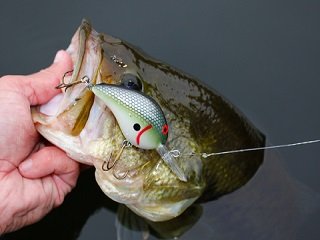 It’s September already! Where did the summer go in such a hurry? With fall on its way, cooler water is not far behind. This drop in water temperature means many good things for anglers, though. Here are a few tips to help you get prepared for autumn on the lake.
It’s September already! Where did the summer go in such a hurry? With fall on its way, cooler water is not far behind. This drop in water temperature means many good things for anglers, though. Here are a few tips to help you get prepared for autumn on the lake.
Firstly, cooler waters mean you will often find bass schooling together. Furthermore, they will generally be more active than they were during the warm summer months, so you’ll have a better chance to catch multiple fish from the same area. I think we can all agree that’s a promising notion.
The first thing you’ll want to know is where to find fish in during the autumn months. One important tip is to look for green. Vegetation that’s still green tends to attract bass in the fall, because they offer oxygen and draw baitfish, both of which will attract bass. Also, I’d look for large rocks or dense collections of rocks. Since rocks hold heat, bass tend to stay near them, so there will be a good chance of finding fish when you find rocks. Lastly, look for wood, such as timber, brush piles, or docks. In fact, dock fishing can be quite productive in the fall, especially on sunny days or areas where there’s a transition from shallow to deep water.
Once you find the fish, you’ll need to know what to throw at them. By the time fall arrives, a lot of the common prey items will be gone, except minnows and other small fish, so lures that resemble small fish, such as spinnerbaits and jerkbaits, are what you’ll want to use. Also, smaller fish tend to feed near the surface, so lipless crankbaits, shallow crankbaits and topwater baits will also produce. As you move from shallow water to steep drop-offs, it might be smart to switch to deeper diving crankbaits. And if you’re going down to the bottom, don’t forget about jigs, are reliable producers in cooler water. Since you’ll be working a jig along the bottom, you won’t use them to search like other lures, but once you’ve located fish or if you’re fishing a specific patch of vegetation, jigs are your best friend.
When it comes to bait, try to use lures that match the baitfish in the area you're fishing. If you aren't sure of the baitfish, it’s always a safe bet to go with chrome or white lures. If the water is stained or muddy, gold, chartreuse, orange, or red lures are good, due to the fact that they stand out a little better.
The tips outlined above are just a few to help get your fall fishing off on the right foot. Of course, your tactics will need to be tweaked a bit here and there, depending on your region or the fish behavior on a given day, but today’s prep course is a great starting point. Good luck this fall and tight lines to you all!








